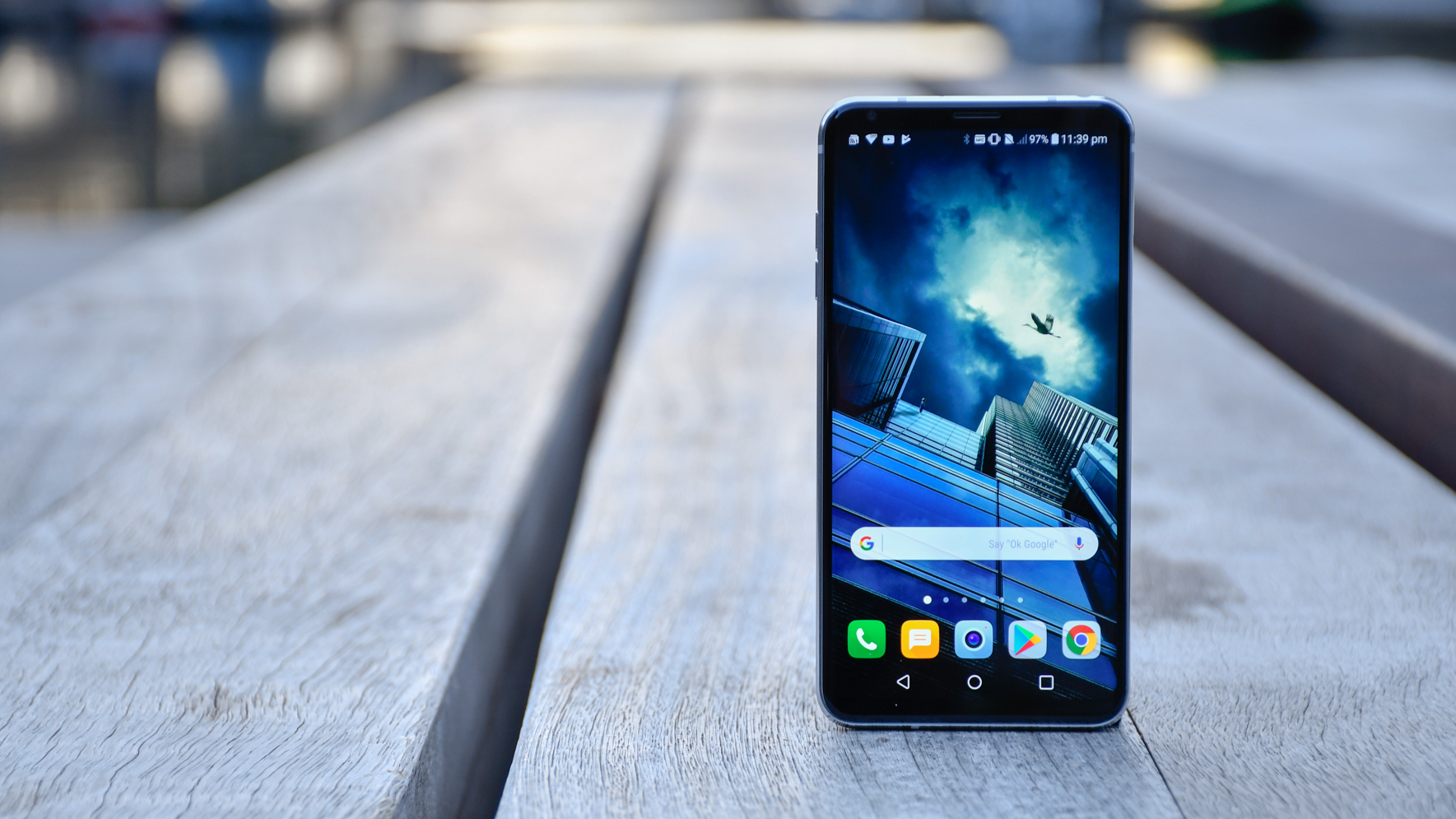Why you can trust TechRadar
Interface and reliability
- Loaded with Android Nougat at LG's polished interface
- Android Oreo is coming
- Built-in apps are mostly useful
The LG V20 was the first non-Google phone to come with Android Nougat out of the box last year. And to celebrate the occasion, Google bestowed it with the then-new In-App search function, which operates much like the drag-down-to-search ability in iOS.
You might be thinking that LG has raced to be the first with Android Oreo, but that’s not the case. The V30 will launch with Nougat, though we’re totally fine with that. Why? Because LG has finally hopped on board with all of the best features last year’s update brought.
Its OLED display brings the sought-after Google Daydream VR ability to an LG phone for the first time. You’ll also be treated to In-App search, split-window multitasking and, based on what we’ve heard from Google, the phone is being primed for the Oreo update as we speak.
The visual interface is LG’s own laid over Android Nougat 7.1.2 and if you’re used to stock Android, there will be a bit (but not much) of an adjustment process. On our final unit, which is tied to T-Mobile, there are a few carrier-specific apps, but otherwise, there’s no bloatware loaded in sight and this trim offering is complemented by the interface’s quick operation.
That said, LG has included its usual batch of pre-installed apps. There’s LG Health, an FM radio application, QuickMemo+, amongst a few other small additions. If you have a preferred alternative to these, like Google Keep or Google Fit, you’ll probably install it without a second thought, but what’s here is totally usable and palatable.
Moving on, you might not notice on first glance, but the settings menu is bursting at the seams with interesting modes and features at your disposal. A few highlights include an IFTTT-like “Smart Settings” mode that automatically boots certain apps and toggles settings when you, say, walk into your home or plug headphones in. It’s a swell quality of life touch that makes things just a bit easier for those who like to get more done with less effort.
Obviously, the Floating Bar feature gets a shout-out here. It replaces the second screen hardware found in previous V-series phones with just a simple interface overlay. You’ll have to switch it on, but once you do, you’ll have contacts, quick actions and app launching just a few clicks away.
Simply put, while I’m a stock Android fan with my main driver being the Google Pixel XL, the LG V30’s software is a refreshing glimpse into just how palatable LG’s twist on Android has become. It’s fast, feature-packed and easy to use.
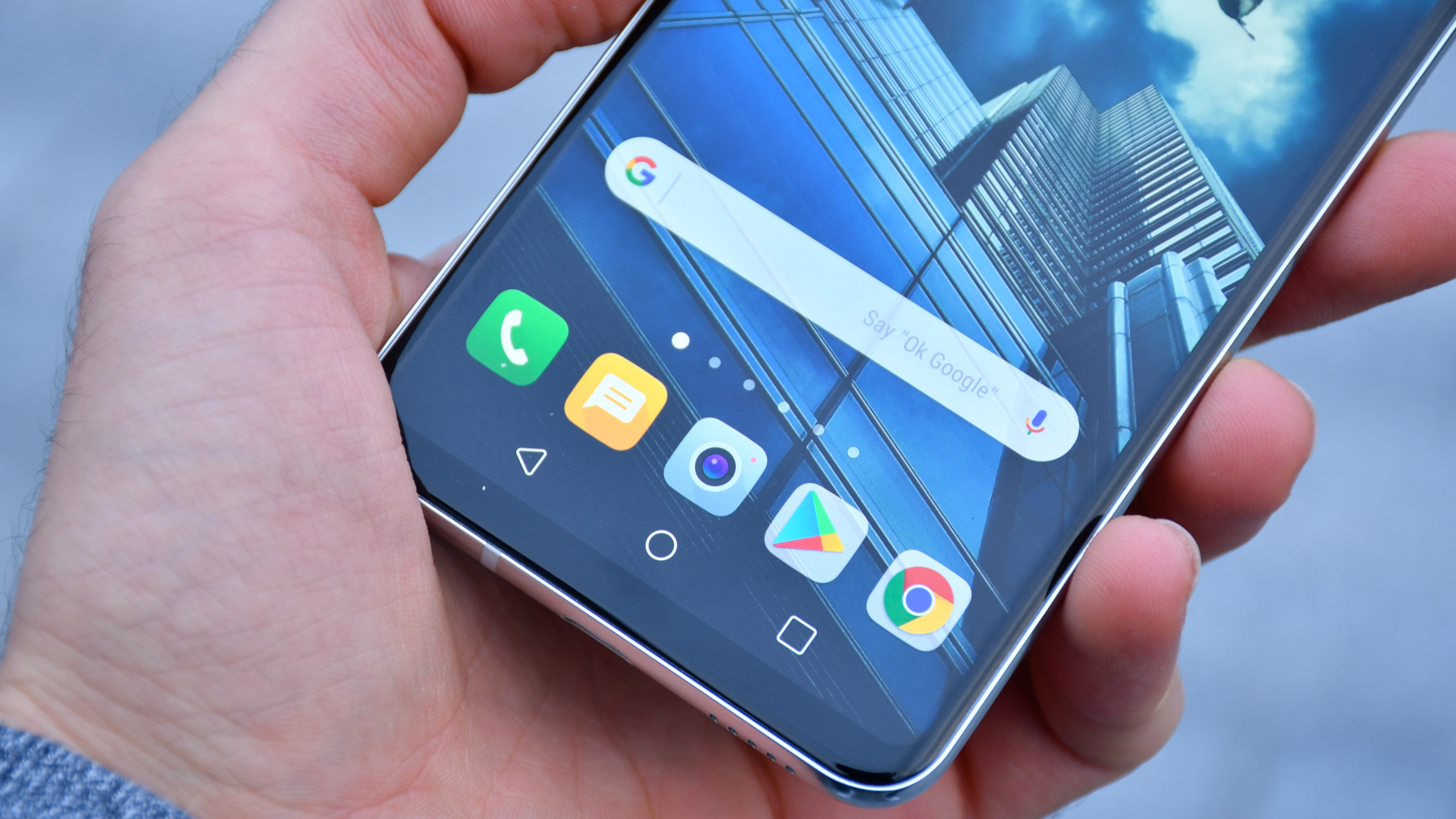
Movies and gaming
- Dazzling OLED screen looks great, even better with HDR content
- microSD support extends storage far past its 64GB default
LG’s V-series smartphones are traditionally very savvy in the multimedia arena. The V30 is no exception and it ups the ante compared to previous devices in the line.
When it comes to watching movies, LG has never made a better phone to view them on. The 2K OLED display pops with vibrance, even going as far as being HDR-ready for apps like Netflix and YouTube HDR at launch. This means that the colors will be richer and the overall contrast will offer more levels of depth than a traditional display is capable of.
Even if you aren’t watching HDR content, you’ll still have a good experience here. Viewing angles and brightness are all adequate for viewing both indoors and out.
For gaming, the V30 is one of the year’s best places to get down to business. Thanks in equal part to its beautiful 6-inch OLED display, the Quad DAC built into the 3.5mm headphone jack and the powerful Snapdragon 835 processor, playing any game whatsoever is a breeze from a performance perspective and a generally good time.
As of right now, the taller aspect ratio doesn’t work seamlessly with most games. However, LG has inserted a few toggles that appear in the corner of the screen to give you more than enough viewing modes to have the best experience. Fire Emblem Heroes, for instance, doesn’t take full advantage of the 18:9 aspect ratio, but if stretched, it will fill in the bezels with a slick design.
Music
- 3.5mm headphone jack is here
- MQA streaming shows that LG is ahead of the wireless curve
- Quad DAC takes sound quality to new, tweakable heights
We usually bundle the music section in with movies and gaming, but given the V30's knack for audio, it's best to talk in depth about it.
Listening to music is fun on just about any phone, but LG’s V30 takes it to a new level of enjoyment. It gets not one thunderous round of applause, but two for including the 3.5mm headphone jack and supplementing it with an awesome Quad DAC (digital to analog converter) and clever software to squeeze more use out of it.
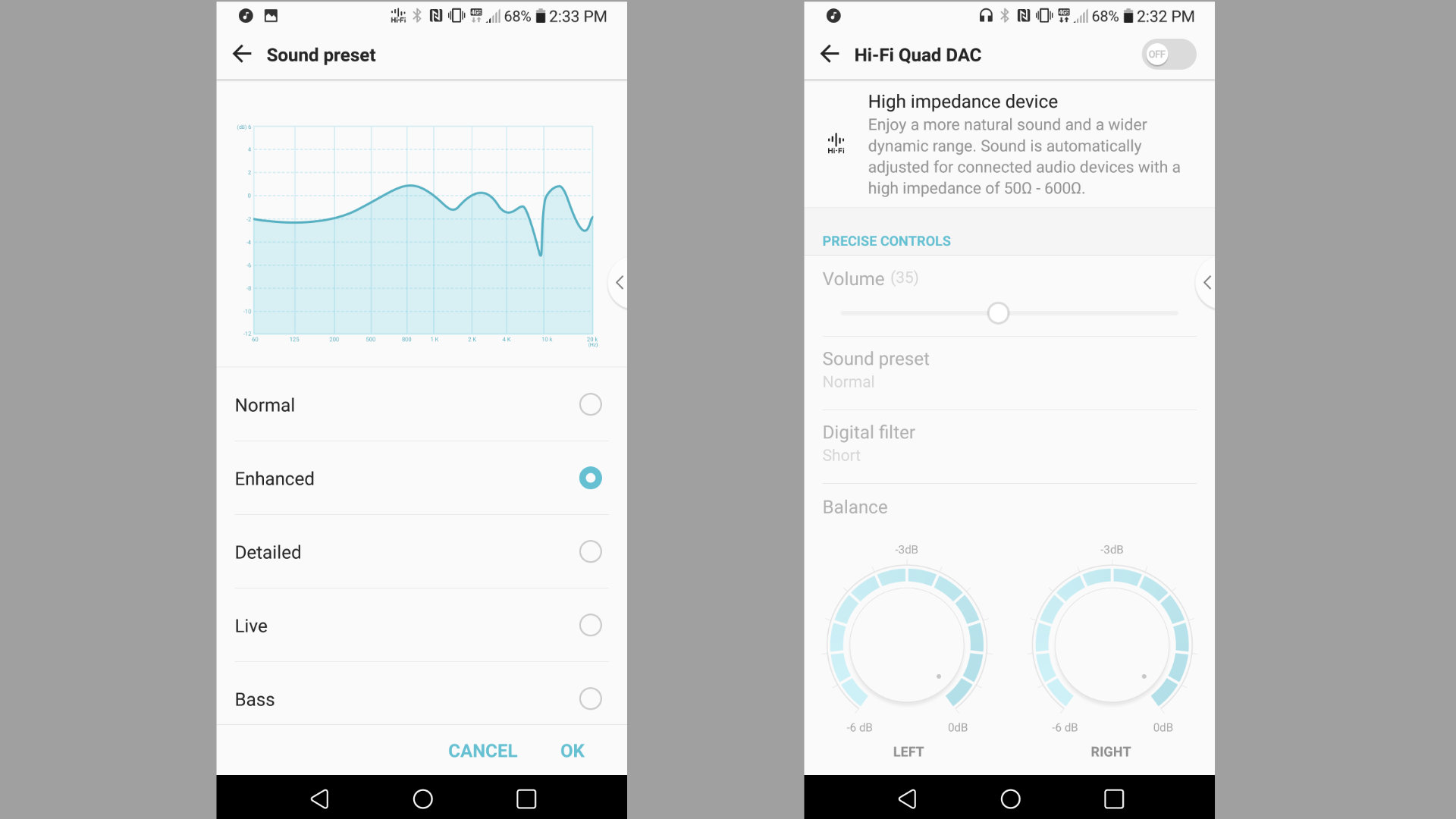
The V30 can intelligently decipher between your average set of headphones and some high-quality cans to deliver the right sound to you. New to the V30 is the ability to tweak the sound profile delivered by the Quad DAC, even individually tweaking the decibel level of each ear speaker when switched on. It’s such a treat. And of course, the audio benefits extend into your time with movies and games.
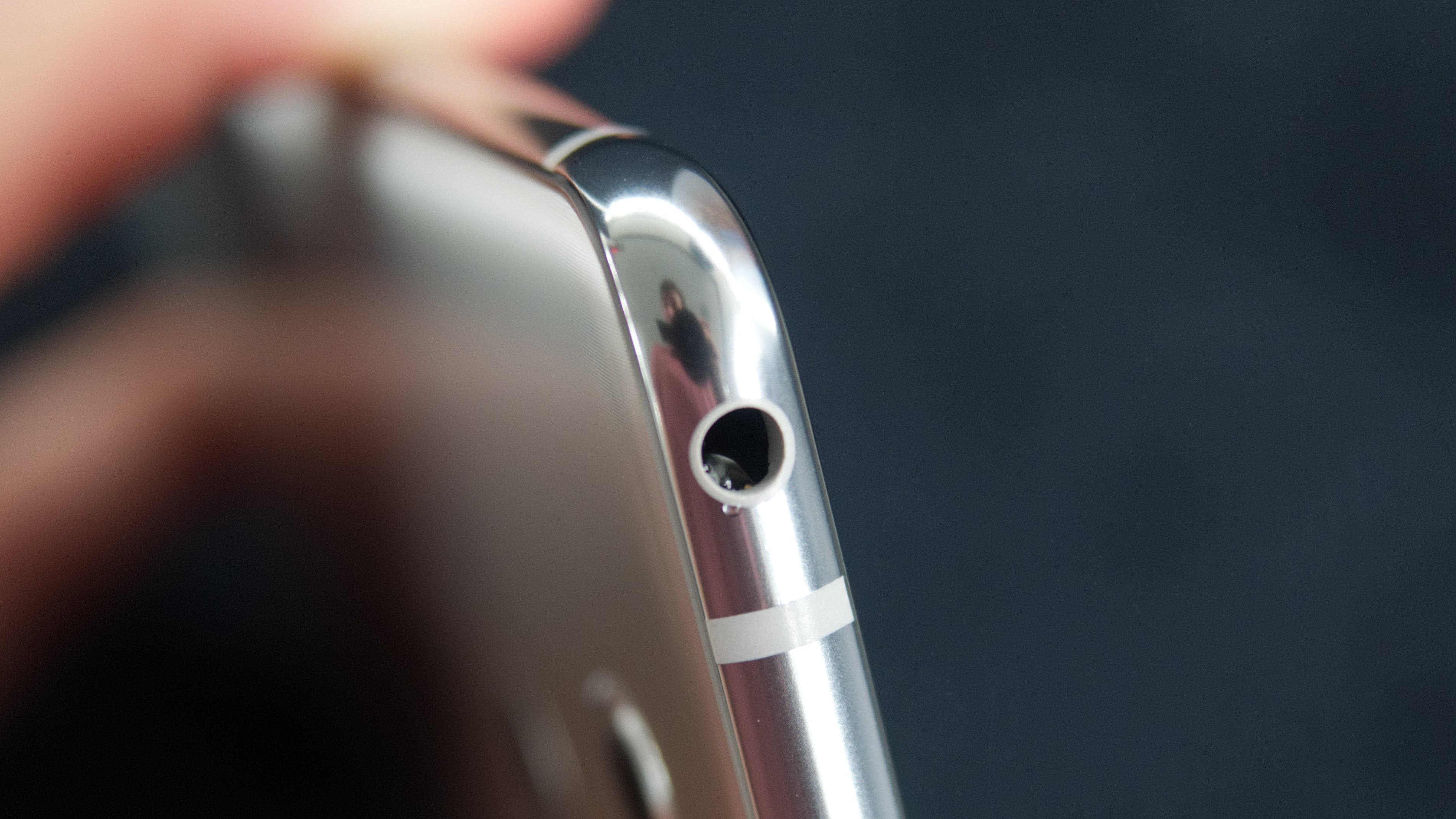
If wired headphones aren’t your thing (you monster!), the V30 is also one of the first smartphones, if not the very first globally-available, to support the MQA wireless audio codec.
This CD-quality format is said to be compressed in a rather small file size, which goes against the idea that high-fidelity tunes have to take up a lot of space. If you stream tunes through Tidal, the V30 will properly unfold the MQA file to deliver studio-quality sound. Of course, you’ll need the best headphones available to properly enjoy it.
LG’s melding of innovation on both the wired and wireless fronts shows that you can honor the past while plowing ahead. Compared to Apple’s headphone jack-less iPhone 8 and Google Pixel 2, this is courage.
Additionally, once Android Oreo arrives, we’ll likely see the V30 supporting the fleet of high-quality audio codecs, like aptX HD, LDAC and more.
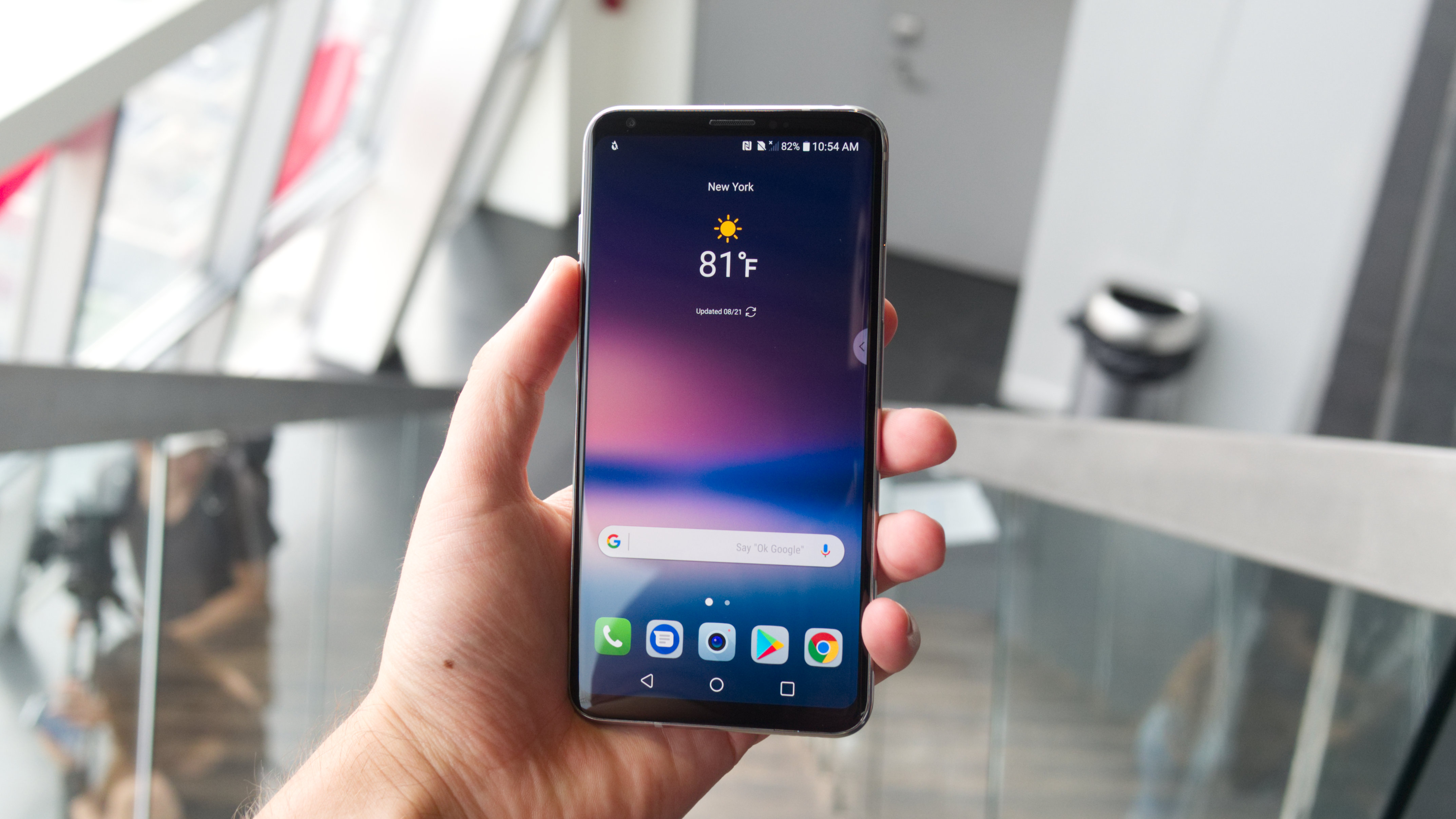
Specs, performance and benchmark
- Snapdragon 835 and 4GB of RAM hum along without a hitch
Inside of the V30, LG has opted to check just about every box required to stand up against the latest and greatest competition.
You’ll find the Snapdragon 835, which is making its LG debut here, paired with 4GB of RAM. Our time with the V30 has seen zero lag while switching between apps and multitasking – even when loading up intensive games or the camera app’s unique and new abilities.
Combining the latest tech with a pixel-dense OLED display was the right move here for LG. Not only does it put the V30 in line with the competition, it’s finally primed for the Google Daydream View virtual reality headset. In our experience, this worked just as well as the Samsung Galaxy S8 – one of the other Snapdragon 835-equipped Daydream-ready phones.
Current page: What's it like to use?
Prev Page Introduction and design Next Page Battery life and cameraCameron is a writer at The Verge, focused on reviews, deals coverage, and news. He wrote for magazines and websites such as The Verge, TechRadar, Practical Photoshop, Polygon, Eater and Al Bawaba.
